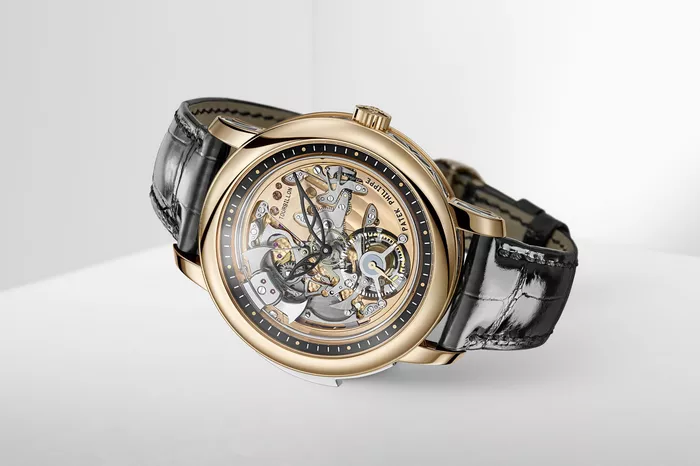Patek Philippe is renowned for its prestigious and high-quality timepieces. As one of the most esteemed luxury watch brands, understanding the production volume of Patek Philippe watches provides valuable insight into the brand’s exclusivity and craftsmanship. This article delves into the specifics of how many Patek Philippe watches are made each year, offering detailed, point-by-point information.
Patek Philippe, founded in 1839, is one of the oldest and most respected Swiss watch manufacturers. Known for its intricate complications and timeless design, Patek Philippe has maintained a reputation for producing some of the finest watches in the world. One key aspect that contributes to the brand’s allure is its limited production. This article explores the annual production numbers of Patek Philippe watches, shedding light on the factors influencing these figures and the implications for collectors and enthusiasts.
Historical Production Numbers
Historically, Patek Philippe has adhered to a strategy of limited production to maintain exclusivity and high standards of quality. The production numbers have varied over the years, reflecting changes in demand, technological advancements, and the company’s strategic decisions.
Early 20th Century: In the early 1900s, Patek Philippe produced fewer watches compared to modern standards. Production numbers were relatively low, as the company focused on artisanal craftsmanship and bespoke timepieces.
Mid-20th Century: By the mid-20th century, production began to increase as Patek Philippe expanded its market presence. However, the brand still maintained a conservative approach to quantity, emphasizing quality over quantity.
Late 20th Century to Early 21st Century: The late 20th century saw gradual increases in production as Patek Philippe adapted to global market demands while preserving its commitment to exclusivity. The early 21st century continued this trend, with production numbers rising but remaining relatively modest compared to industry giants.
Current Production Figures
As of recent years, Patek Philippe’s annual production numbers are estimated to be between 60,000 to 70,000 watches. This figure reflects a deliberate choice by the company to balance exclusivity with the ability to meet growing demand.
Annual Reports: Patek Philippe does not publicly disclose exact production figures, but estimates are based on industry insights and reports. The company’s annual production is carefully managed to ensure each watch meets the brand’s rigorous quality standards.
Production Strategy: The company’s strategy involves producing a limited number of watches to maintain the brand’s prestigious status. This approach allows Patek Philippe to ensure that each timepiece is crafted to the highest standards, preserving its reputation for excellence.
Factors Influencing Production Numbers
Several factors influence the annual production numbers of Patek Philippe watches:
Demand and Market Trends: Demand for luxury watches fluctuates based on market trends, economic conditions, and collector interest. Patek Philippe adjusts its production numbers in response to these factors to align with market demand while maintaining exclusivity.
Technological Advancements: Innovations in watchmaking technology can impact production capabilities. Patek Philippe invests in cutting-edge technology to enhance its timepieces, but such advancements are integrated gradually to ensure quality control.
Quality Control: Patek Philippe places a strong emphasis on quality control. Each watch undergoes rigorous testing and inspection, which can limit the number of watches produced annually. The brand’s commitment to excellence ensures that every timepiece meets its high standards.
Craftsmanship and Artistry: The intricate craftsmanship and artistry involved in creating Patek Philippe watches contribute to the brand’s limited production. Skilled artisans work meticulously on each watch, making the production process time-consuming and labor-intensive.
See Also: How To Get A Patek Philippe At Retail
Impact on Collectors and Enthusiasts
The limited production of Patek Philippe watches has several implications for collectors and enthusiasts:
Exclusivity: The brand’s strategy of producing a limited number of watches enhances their exclusivity. Collectors value the rarity of Patek Philippe timepieces, which can increase their desirability and value in the secondary market.
Investment Value: Patek Philippe watches are often considered a sound investment due to their limited production and enduring appeal. Rare models and limited editions can appreciate significantly over time, making them sought-after assets for collectors.
Waitlists and Availability: Due to the limited production, there are often waitlists for certain Patek Philippe models. This exclusivity can make acquiring a specific watch challenging, adding to the allure and prestige of owning a Patek Philippe timepiece.
Comparisons with Other Luxury Brands
To provide context, it’s useful to compare Patek Philippe’s production numbers with those of other luxury watch brands:
Rolex: Rolex, a major competitor in the luxury watch market, produces significantly more watches annually compared to Patek Philippe. Rolex’s production numbers are estimated to be in the hundreds of thousands, reflecting its broader market reach and different brand strategy.
Audemars Piguet: Another prominent Swiss watchmaker, Audemars Piguet, also produces more watches than Patek Philippe. While Audemars Piguet emphasizes both exclusivity and higher production volumes, Patek Philippe remains more conservative in its approach.
Omega: Omega, known for its extensive range of watches, has higher production numbers compared to Patek Philippe. Omega’s focus on mass-market appeal and technological innovation drives its larger production volume.
Conclusion
Patek Philippe’s annual production numbers, estimated between 60,000 to 70,000 watches, reflect the brand’s commitment to maintaining exclusivity and high quality. The limited production allows Patek Philippe to preserve its reputation as a premier luxury watchmaker, ensuring that each timepiece meets the highest standards of craftsmanship and precision. For collectors and enthusiasts, the rarity and exclusivity of Patek Philippe watches enhance their desirability and investment potential, making them prized possessions in the world of haute horology.
By understanding the factors influencing Patek Philippe’s production numbers and comparing them with other luxury brands, one gains a deeper appreciation of the brand’s unique position in the watch industry. The limited production not only underscores Patek Philippe’s dedication to quality but also contributes to the enduring allure of its timepieces.

